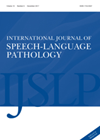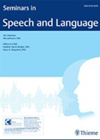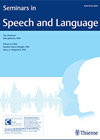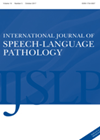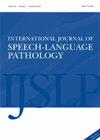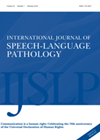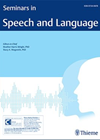
Journal Reviews
Talk your brain well: discourse training to fortify your cognitive functioning and protect against dementia
Mild cognitive impairment (MCI) can be described as a transitional stage prior to a diagnosis of dementia. Approximately 15% of people with amnestic MCI (where memory is the leading symptom) develop dementia. Nonpharmacological interventions, specifically cognitive training, has shown some...
Swallowing the risk: managing dysphagia in aged care
The risk of dysphagia increases with age and the prevalence of dysphagia in aged care facilities is 41–52%. Dysphagia increases the risk of aspiration, asphyxiation, malnutrition, pneumonia and ultimately death. Modifying food and fluids, by providing mashed or pureed foods...
Invest in parents: motivation is key
Home practice is a key component in promoting generalisation of what is learned in speech and language therapy sessions to the real world. Yet time constraints, stress, ambivalence toward practice and increased care demands when a child has a disability...
Demonstrating unobservable effects of therapy through PROMS: a review
Ultimately, healthcare should meet the needs of the people it is designed for. One way of measuring this is using patient-reported outcome measures (PROMS). These tools capture the patient’s perspective and have been described as demonstrating the unobservable effects of...
In the context of the person with aphasia participating in life
Approaches to assessment and treatment for people with aphasia have traditionally taken a syndrome or deficit-based view. It’s only in the last few decades that a more functional approach to aphasia has been recognised, namely the need to couch both...
Remote living: can we learn anything about telehealth use during the pandemic in Australia?
Healthcare services in Australia have been using telehealth to reach remote areas for many years prior to the Covid-19 pandemic. It is estimated that 10% of the Australian population have no access to primary healthcare within a 60-minute drive. This...
Four lessons: the development of speech and language therapy research for people with dementia care
Dementia has been described as the biggest expanded caseload for speech and language therapists. Everyone with dementia experiences communication difficulties. The late Prof Audrey Holland revolutionised the work of speech-language pathologists in this field through four key lessons. Lesson 1:...
Effect of swallowing exercises following free flap for oral cancer reconstruction
This paper from Beijing looked at 68 patients, 34 in a control group and 34 in an intervention group. Oral exercise training was performed by a specialist swallowing nurse in the intervention group. They found that personalised oral exercises had...
Lonely, so lonely
The pandemic has evidenced the negative mental and physical health outcomes that are associated with isolation and loneliness. This study was undertaken in Australia, where one quarter of the population live alone. Giving our ageing population worldwide, the number of...
Cascading communication skills to help children with autism
Inadequate workforce resource is an ongoing difficulty across the health professions. This study proposes a train the trainer model, with the ultimate goal of improving the communication skills of children with autism. The study describes an intervention called naturalistic developmental...
Strengthen your communication: better conversations can reduce the risk of frailty
Our population is ageing and, with this, the incidence of frailty is increasing. Frailty is defined as increased vulnerability to stressors resulting in adverse outcomes. Stressors can include communication and swallowing difficulties, yet these are poorly recognised. Management of communication...
The hidden dementia in motor neurone disease
It is now well recognised that people with motor neurone disease (also known as amyotrophic lateral sclerosis) are at risk of developing frontotemporal dementia. It can be difficult to recognise the symptoms of cognitive decline in this group due to...

